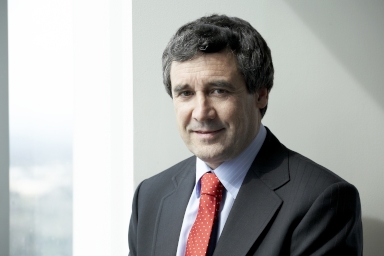Retirement
Do I have any investment restrictions with my SMSF when I’m in pension phase?
Retirement
Do I have any investment restrictions with my SMSF when I’m in pension phase?
When an SMSF investor begins drawing a pension from their fund it may feel like the end of a journey – you finally get to use some of those hard-earned savings.
Do I have any investment restrictions with my SMSF when I’m in pension phase?
When an SMSF investor begins drawing a pension from their fund it may feel like the end of a journey – you finally get to use some of those hard-earned savings.

In reality when you begin drawing a pension it is more like you have reached a key junction on the journey and you are now heading in a different direction.
So while much stays the same – for example, there are not any additional restrictions on what the SMSF can invest in – it doesn’t mean SMSF trustees are not facing different challenges in the way they invest the fund’s portfolio.
The fundamental change when a pension is commenced is that for most people it means the regular salary stops and along with it the contributions to super.
There can be a sense of reaping the rewards of the years of savings it also comes with the concern about what happens – assuming the portfolio is exposed to investment markets – if markets fall dramatically and the portfolio drops in value but you are forced to keep withdrawing funds to cover lifestyle expense.

So while the rules around investing do not change at the time of going into pension mode, it is a critical time to review the investment portfolio from a risk perspective. Consider what would happen if markets fell 10 or 20 per cent – stress test yourself on how that would feel.
The strength of an SMSF is its flexibility, but unlike large institutional funds, that can bring with it opportunity or temptation to test the rules that apply to all SMSF trustees.
A particular issue in this regard is the generational transfer of wealth, and there are a range of restrictions that apply to SMSFs both before and while they are in a drawdown phase.
The classic example is ageing parents using their nest eggs to help out their adult children. Although many people in retirement might see spending money on their kids as the best investment they could possibly make, the ATO says that SMSFs must exist solely to provide for the retirement of its members.
That means gifting part of a SMSF’s balance to your kids, for example, as an early inheritance, can fall foul of ATO regulations.
And if your SMSF happens to invest in ‘collectable’ items, which could include fine art, antiques or classic cars, they must be stored appropriately – and not find their way into your children’s homes or garages for their own enjoyment.
As retirees age, their children can perhaps feel a need to speed up this transfer of wealth – for example, if they are providing extra assistance or care for infirm parents.
Even if retirees feel some obligation to meet that expectation from their children, the rules simply state that any assets held in their SMSF must be used to fund their retirement.
Family restrictions aside, investors will not face any other barriers to investing while in pension phase – but that doesn’t mean retirees shouldn’t make appropriate considerations for how their asset allocation affects their ability to have an income stream that meets their needs in retirement.
A good example here is a direct property investment: while a rental property might provide a steady income stream for an SMSF, what implications will it have as the fund dwindles and its trustees need to draw down on its capital? An illiquid asset like real estate can take months to sell if an SMSF is in need of a top-up via the capital value of a physical asset.
Because of this, it’s important that SMSF trustees not only ensure their fund continues to meet ATO requirements, but remains relevant to their needs as they age.
Having a concrete plan for your SMSF that can serve it well into the pension phase is critical to ensuring asset allocation, income and capital preservation remain the priorities for your fund. A 2014 study from Rice Warner said that only 54 per cent of SMSFs had a written financial plan in place, and only 69 per cent of those plans made considerations for a draw-down strategy.
On that front, you may want to consider whether a financial planner can help you develop a clear blueprint for how your SMSF can adjust along with you across different stages of life, from accumulation, to pension phase, and even how your SMSF will continue to look after you if you no longer have the capacity to manage your own financial affairs.
If you can get a clearly defined plan for your SMSF in place early, it can help avoid any confusion or infractions in future by clearly demonstrating to your children or other close dependents that your nest egg is not there to support their personal or business aspirations, or be part of an ‘early inheritance’ – it’s the basis of your livelihood in retirement.
Robin Bowerman, head of market strategy and communication, Vanguard Australia.

Self managed super fund
Financial progress hinges on ambition, not income, says Stake Report
Australia faces a financial turning point, with new research from online investment platform Stake revealing a nation divided into two distinct groups: the 'Starters', who invest and feel in control ...Read more

Self managed super fund
OKX targets Australia's $1 trillion SMSF market with new crypto platform launch
In a significant move aimed at capitalising on Australia's burgeoning digital asset market, global onchain technology company OKX has unveiled a new Self-Managed Super Fund (SMSF) expansion on its ...Read more

Self managed super fund
Industry leaders launch SMSF Innovation Council to drive digital transformation
A consortium of finance industry leaders has launched an SMSF Innovation Council to help Australia's $1.02 trillion self-managed superannuation fund industry navigate digital transformation. Read more

Self managed super fund
Superannuation guarantee to be paid on government paid parental leave, says ASFA
The Association of Superannuation Funds of Australia (ASFA) has hailed the government's decision to include Superannuation Guarantee payments with its Paid Parental Leave policy as a critical step ...Read more

Self managed super fund
SMSF experts advise against hasty reactions to potential super tax changes
As the Australian Government proposes a new tax measure on superannuation earnings for balances exceeding $3 million, experts from the self-managed super funds (SMSF) sector are urging members not to ...Read more

Self managed super fund
Federal government announces changes to superannuation contribution caps
The Federal Government has announced changes to the superannuation contribution caps, impacting self-managed super funds (SMSFs) and their members from 1 July 2024. Read more

Self managed super fund
SMSF Association calls for joint effort to tackle early super access
The SMSF Association is calling on a collaborative approach including the Government, the Australian Taxation Office (ATO), the Australian Securities and Investments Commission (ASIC), and the ...Read more

Self managed super fund
Rest Super members file class action over alleged insurance premium deductions
Shine Lawyers has initiated a class action lawsuit against Rest Superannuation (Rest), alleging the unlawful deduction of income protection insurance premiums from members' superannuation accounts. Read more

Self managed super fund
Financial progress hinges on ambition, not income, says Stake Report
Australia faces a financial turning point, with new research from online investment platform Stake revealing a nation divided into two distinct groups: the 'Starters', who invest and feel in control ...Read more

Self managed super fund
OKX targets Australia's $1 trillion SMSF market with new crypto platform launch
In a significant move aimed at capitalising on Australia's burgeoning digital asset market, global onchain technology company OKX has unveiled a new Self-Managed Super Fund (SMSF) expansion on its ...Read more

Self managed super fund
Industry leaders launch SMSF Innovation Council to drive digital transformation
A consortium of finance industry leaders has launched an SMSF Innovation Council to help Australia's $1.02 trillion self-managed superannuation fund industry navigate digital transformation. Read more

Self managed super fund
Superannuation guarantee to be paid on government paid parental leave, says ASFA
The Association of Superannuation Funds of Australia (ASFA) has hailed the government's decision to include Superannuation Guarantee payments with its Paid Parental Leave policy as a critical step ...Read more

Self managed super fund
SMSF experts advise against hasty reactions to potential super tax changes
As the Australian Government proposes a new tax measure on superannuation earnings for balances exceeding $3 million, experts from the self-managed super funds (SMSF) sector are urging members not to ...Read more

Self managed super fund
Federal government announces changes to superannuation contribution caps
The Federal Government has announced changes to the superannuation contribution caps, impacting self-managed super funds (SMSFs) and their members from 1 July 2024. Read more

Self managed super fund
SMSF Association calls for joint effort to tackle early super access
The SMSF Association is calling on a collaborative approach including the Government, the Australian Taxation Office (ATO), the Australian Securities and Investments Commission (ASIC), and the ...Read more

Self managed super fund
Rest Super members file class action over alleged insurance premium deductions
Shine Lawyers has initiated a class action lawsuit against Rest Superannuation (Rest), alleging the unlawful deduction of income protection insurance premiums from members' superannuation accounts. Read more








